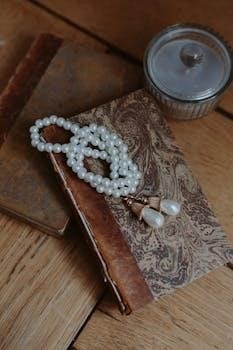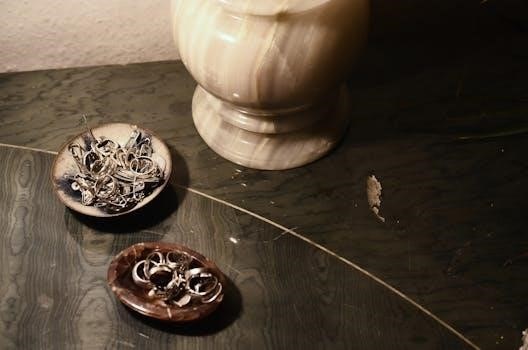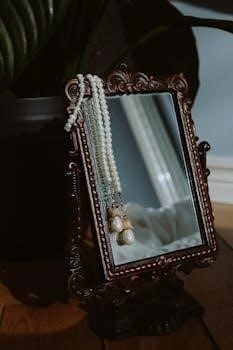Delving into the world of vintage and antique jewelry offers a captivating journey through history and craftsmanship. This guide provides valuable insights for enthusiasts eager to uncover the stories behind cherished pieces. Learn to distinguish genuine items, authenticate valuable items and appreciate the historical significance of each piece.
Understanding the Difference Between Vintage and Antique Jewelry
Distinguishing between vintage and antique jewelry is crucial for collectors and enthusiasts. The primary differentiator lies in age. Antique jewelry, by definition, must be over 100 years old, representing pieces from a bygone era. These items often showcase unique craftsmanship and materials that reflect the styles and techniques prevalent during their time of creation.

Vintage jewelry, on the other hand, generally refers to pieces that are at least 30 years old but not yet qualifying as antique. This category encompasses a broader range of styles and periods, offering a glimpse into more recent decades. Understanding this age-based distinction is the first step in accurately identifying and appreciating the historical significance of your treasured items.
Furthermore, recognizing the nuances in design, materials, and manufacturing techniques specific to each era can greatly enhance your ability to differentiate between vintage and antique pieces. By familiarizing yourself with these key characteristics, you’ll be well-equipped to navigate the fascinating world of vintage and antique jewelry.
Key Features of Vintage Jewelry (30-100 Years Old)
Vintage jewelry, typically spanning from 30 to 100 years old, showcases distinct characteristics that reflect the styles and materials of its era. Pieces from the Art Deco period (1920s-1930s) often feature geometric shapes, bold colors, and the use of materials like Bakelite and chrome. Mid-century modern jewelry (1940s-1960s) is known for its abstract designs, asymmetrical forms, and the incorporation of materials like Lucite and enamel.
Identifying vintage jewelry requires a keen eye for detail. Look for specific design elements, such as floral motifs in the 1950s or the use of synthetic gemstones in the 1970s. Hallmarks and maker’s marks can also provide valuable clues about the origin and authenticity of a piece. Examining clasps, fasteners, and hooks can further help to narrow down the era in which the jewelry was created.
Understanding these key features will enable you to distinguish vintage jewelry from both antique pieces and modern reproductions, allowing you to appreciate the unique charm and historical context of each item in your collection.
Characteristics of Antique Jewelry (100+ Years Old)
Antique jewelry, defined as pieces over 100 years old, offers a glimpse into bygone eras, each with distinct styles and craftsmanship. Jewelry from the Victorian era (1837-1901) often features sentimental motifs like flowers, hearts, and lockets, crafted from materials such as gold, jet, and gemstones like garnets and pearls. The Edwardian period (1901-1910) is characterized by delicate designs, intricate filigree work, and the use of platinum and diamonds.
One key characteristic of antique jewelry is the presence of handmade elements, reflecting the craftsmanship of the time. Look for unique details like hand-cut gemstones, intricate metalwork, and signs of wear consistent with age. Hallmarks and maker’s marks are crucial for identifying the origin and authenticity of antique pieces. These marks can provide valuable information about the manufacturer, the metal content, and the country of origin.
Understanding these features will help you appreciate the artistry and history behind antique jewelry, distinguishing it from later vintage and contemporary pieces.
Identifying Hallmarks and Maker’s Marks
Hallmarks and maker’s marks are crucial clues in authenticating and valuing vintage and antique jewelry. These small stamps, often found on clasps, shanks, or hidden areas of a piece, provide insights into the jewelry’s origin, metal content, and manufacturer. Hallmarks typically indicate the purity of the metal, such as “925” for sterling silver or “14K” for 14-karat gold.
Maker’s marks, on the other hand, identify the company or artisan who created the piece. Researching these marks can reveal valuable information about the jewelry’s history and potential value. Resources like online databases, books, and antique jewelry experts can assist in deciphering unfamiliar marks.
When examining a piece, use a magnifying glass to carefully inspect for any markings. Note the shape, symbols, and any accompanying letters or numbers. Be aware that counterfeit jewelry may also bear fake hallmarks, so it’s essential to compare the marks with known examples and assess the overall quality and style of the piece.
Recognizing Jewelry Materials (Gold, Silver, Platinum, Rhinestones)

Identifying the materials used in vintage and antique jewelry is crucial for assessing its value and authenticity. Gold, a popular choice, comes in various karats, indicating its purity. Look for hallmarks like “14K” or “18K” to determine the gold content. Silver, often marked with “925” for sterling silver, may tarnish over time, requiring cleaning.
Platinum, a durable and valuable metal, is often stamped with “PLAT” or “PT.” Rhinestones, glass imitations of diamonds, were commonly used in costume jewelry. Distinguishing them from genuine gemstones requires careful examination. Use a jeweler’s loupe to inspect for imperfections and the absence of natural inclusions.
Understanding the properties and hallmarks of these materials will help you evaluate the quality and origin of vintage and antique jewelry. Consulting with a jewelry expert can provide further insights and ensure accurate identification.
Dating Jewelry Based on Styles and Eras
Dating vintage and antique jewelry involves recognizing the distinct styles and characteristics associated with different historical periods. The Victorian era (1837-1901) often featured sentimental motifs, such as lockets and cameos, crafted in gold or silver. Art Nouveau jewelry (1890-1910) showcased flowing lines, natural themes, and the use of materials like enamel and glass.
The Art Deco period (1920s-1930s) embraced geometric shapes, bold colors, and the incorporation of diamonds, platinum, and gemstones like sapphires and emeralds. Mid-century modern jewelry (1940s-1960s) often featured abstract designs and the use of materials like gold, silver, and rhinestones.
By studying the design elements, materials, and craftsmanship techniques specific to each era, you can narrow down the age of a piece. Consulting jewelry history resources and comparing your piece to known examples from different periods can further aid in accurate dating.

Examining Clasps, Fasteners, and Hooks
Clasps, fasteners, and hooks on vintage and antique jewelry offer valuable clues about their age and authenticity. Early jewelry often featured simple hook-and-eye closures or c-clasps, which were common in the Victorian and Edwardian eras. Screw-barrel clasps were also used during this time, providing a secure closure for necklaces and bracelets.
The Art Deco period saw the introduction of more elaborate box clasps with intricate designs and often adorned with gemstones. Spring-ring clasps became popular in the mid-20th century and are still widely used today;
Examining the construction and materials of these closures can help determine the age of a piece. For example, handmade clasps with rough edges are more likely to be found on older jewelry, while machine-made clasps suggest a later date. The presence of specific patents on clasps can also provide a precise date range for the jewelry’s creation.
Authentication Tips and Tricks
Authenticating vintage and antique jewelry requires a combination of knowledge, observation, and a bit of detective work. Start by examining the overall design and craftsmanship of the piece. Look for details that are characteristic of specific eras, such as the geometric patterns of Art Deco or the floral motifs of the Victorian period.
Pay close attention to the materials used. Test for precious metals like gold, silver, and platinum using appropriate methods. Check for hallmarks and maker’s marks, which can provide valuable information about the origin and age of the jewelry. Use a magnifying glass to inspect the quality of the gemstones and the setting techniques.

Compare the jewelry to known examples from reputable sources, such as books, museums, and online databases. Be wary of pieces that seem too good to be true, as they may be reproductions or fakes. When in doubt, consult with a qualified appraiser or jewelry historian who can provide expert authentication services.
Resources for Further Research and Identification
To deepen your knowledge of vintage and antique jewelry, numerous resources are available for further research and identification. Start with comprehensive books on jewelry history, styles, and hallmarks. These often include detailed illustrations and valuable information about different eras and designers.
Online databases and websites dedicated to vintage and antique jewelry can be invaluable tools. These resources often feature searchable databases of maker’s marks, historical jewelry advertisements, and articles on specific jewelry types.
Museums with extensive jewelry collections offer opportunities to study authentic pieces firsthand. Attending antique shows and jewelry auctions can also provide exposure to a wide range of vintage and antique items, allowing you to hone your identification skills.
Consider joining jewelry collecting societies or online forums where you can connect with experienced collectors and experts. These communities offer a wealth of knowledge and can provide guidance on identifying and authenticating your own jewelry pieces. Finally, consulting with certified appraisers and gemologists can provide professional assessments and valuations of your treasured items.